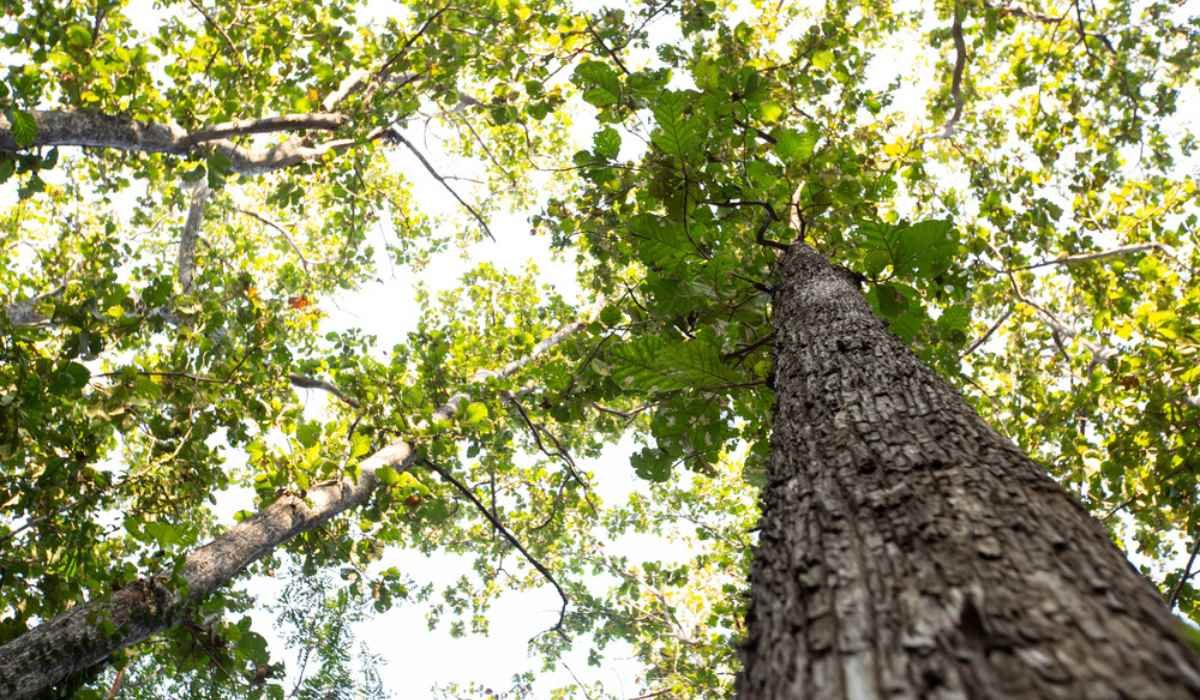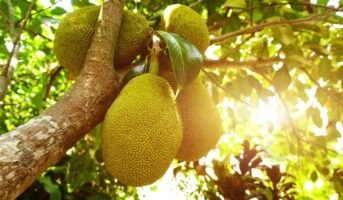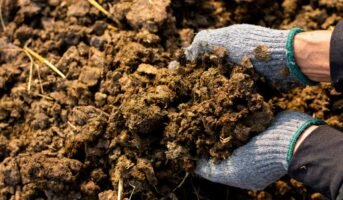Rosewood or Dalbergia latifolia refers to several dark-red hardwood tree species native to tropical areas. Because of its strength, weight, and aesthetic appeal, the wood obtained from these trees is highly prized and in great demand for making furniture and musical instruments.
Rosewood comes from tough, closely-grained, strong, long-lasting, and ornamental trees. It is used for many things, including furniture, panelling, decorative, ordinance, agricultural implements, and more. Rosewood needs soil that is abundant in humus. Over three to four decades, it slowly developed to a height of 20 metres and a circumference of 200 centimetres.
Know about: sequoia trees
Rosewood tree: Key Facts
| Botanical Name | Dalbergia latifolia |
| Common Name | Rosetta Rosewood
Bombay blackwood, East Indian rosewood, Indian palissandre, reddish-brown rosewood, and Java palisandre. |
| Family | Fabaceae |
| Native | Himalayas |
| Growth | 25 m in height and 2 to 3 m in diameter |
| Plant type | Tree |
| Soil | Deeply damp and well-drained soils |
| Flower colour | Yellow or White |
| Flower size | Up to 1.5 cm |
| Toxic | After prolonged exposure |
see also: New year rose
Rosewood tree: Description
- A robust, fast-growing, deciduous tree, also known as North Indian rosewood or Sheesham.
- It is indigenous to the Indian subcontinent and southern Iran. A large, crooked variety of rosewood tree, D. sissoo has white or pink flowers and long, leathery leaves.
- It is often smaller but has a maximum height and diameter of 25 m and 2 to 3 m, respectively. The 15 cm (5.9 in) long, alternating, pinnately complex leaves are leathery.
Rosewood tree: Varieties
Some of the most common varieties include
Brazilian Rosewood
Brazilian Rosewood is unique to the world’s most diversified habitat, the coastal Brazilian Atlantic Forest. Brazilian Rosewood is one of the largest of the more than 8,000 plant species, reaching a height of 40 metres. You can identify Brazilian Rosewood by its feathery leaflets and dark, zigzag-growing stems.
The tree can survive in various climatic environments, from sub-montane woodland to tropical lowland forests. The plant can endure in soils with low levels of nutrients thanks to nitrogen-fixing bacteria and fungus in its roots.

Source: Pinterest
all about: sheesham tree
Madagascar Rosewood
One of the most significant varieties of Rosewood is this one. It is a tiny tree indigenous to Madagascar and gets as tall as 15 feet.
It has thin branches and a narrow crown. Its wood has a lovely red/purple tone, but its bark is greyish-brown. You can notice five lobes on either side of the oval-shaped leaves. The blossoms are fragrant and golden. The fruits have seeds and are rounded.

Source: Pinterest
Indian rosewood (Dalbergia sissoo)
The Indian subcontinent and southern Iran are the natural habitats of the Indian rosewood tree. It is often known as Sheesham in the regional language. The tree may reach a height of 30 metres and blossom into a fragrant behemoth with a profusion of bright yellow flowers on each stem. This deciduous tree’s rapid growth is valued for its priceless wood.

Source: Pinterest
Rosewood tree: How to grow?
You’ll discover that Indian rosewood trees don’t require a lot of upkeep if you start growing them. It won’t take much of your time to care for Indian rosewood. Rosewood has a beautifully streaked and grained appearance with black resinous layers and a deep, rosy brown to purplish-brown tint. It requires fine polish but is challenging to work with due to its sticky nature.
Propagation
Indian rosewood is most frequently reproduced through seeds and seedlings that naturally grow next to mature trees. You cannot use cuttings for breeding this species successfully. Young trees sprout swiftly when mature seeds are put in a moist germination mix in a warm environment.
Rosewood tree: How to maintain?
Sunlight:
Place the plant where it will receive at least 6 hours each day of direct sunlight. Winter months may see a minor decrease in the required amount of solar hours. Low-light environments are not favourable for the growth of this tree.
Since it first emerges as a seedling, the Indian rosewood tree strongly prefers sunlight. Indian rosewood seedlings need a few hours of mild sun each day to become strong. It requires more sunshine and can resist intense sun rays because of its light green and sparse foliage.
Soil:
It may grow in various soil types and geological formations, although it develops most effectively in deeply damp, well-drained soils. Given enough drainage, the Indian rosewood tree may grow in various soil conditions. The tree prefers equally moist soil, growing most vigorously in areas with constant access to sufficient soil moisture. It can handle a pH range of 5.6 to 7.5 and prefers acidic soil.
Watering:
Indian rosewood trees grow in consistently moist soil. The amount of water needed by these trees is average. Keep them well-irrigated when grown in the ground to guarantee robust development. When a plant is in a pot, water it thoroughly each time the top few inches of soil become dry. Deeply water your Indian rosewood until the drainage hole is clear of extra water.
Rosewood grows in alluvial plains with a moderately high water table for the same reason. You can water the Rosewood tree when the top 2-3 inches of soil are fully dry.
Temperature:
The Indian rosewood, a native of tropical and subtropical climes, can withstand extreme heat but not cold. The tree cannot tolerate temperatures below 40°F.
Fertilisers:
Indian rosewood trees require acidic fertilisation like citrus fertilisers to develop a thick canopy and bloom to their full potential. During the growing season, you can fertilise this tree every two weeks with NPK fertiliser with the ratios 16-4-8 or 15-10-9.
Pruning:
Indian rosewood trees proliferate. Therefore, regular trimming will be necessary to maintain their growth when planted in lawns or landscaping. Young trees routinely produce base shoots that can rob the upper foliage of all its developing vitality. You must remove this by pruning.
Rosewood tree: Uses
- The vivid red core wood of the Rosewood tree is prized.
- Rosewood is bulky and difficult yet relatively easy to deal with. Even when used in hundreds of years old furniture, it has a robust and delicious smell that lingers for years.
- Amazingly, the scent can be released by scraping or polishing any old furniture made of Rosewood.
FAQs
Is rosewood tree toxic?
Asthma and other respiratory conditions can be brought on by the dust that is produced when rosewood is sanded. Sensitivity can be raised by prolonged or intense exposure.
How much time does it take Rosewood to grow?
Over three to four decades, it slowly grows to a height of 20 metres and a circumference of 200 centimetres.
Housing News Desk is the news desk of leading online real estate portal, Housing.com. Housing News Desk focuses on a variety of topics such as real estate laws, taxes, current news, property trends, home loans, rentals, décor, green homes, home improvement, etc. The main objective of the news desk, is to cover the real estate sector from the perspective of providing information that is useful to the end-user.
Facebook: https://www.facebook.com/housing.com/
Twitter: https://twitter.com/Housing
Email: [email protected]











